 Marketing books is an all year round task, as any successful Indie author can tell you. However, there are times of the year when doing a little bit of extra marketing pays off. The obvious times are Black Friday, Cyber Monday and during the whole of December. Books make a great Christmas gift, so putting some extra effort (and maybe more money) into your marketing at that time is a ‘no brainer’. But what about other times of the year. Well, we believe that there are many ‘red letter days’ for authors, when they can increase their sales if they promote their books on those days. Looking through the calendar there isn’t a month goes by that doesn’t offer some marketing opportunities, depending on which genre you write in. Take February, for example – it’s the month of romance, so a good time for romance authors to put a little bit of extra oomph into their sales. What days fall in which months varies from country to country. Even “world” days aren’t observed everywhere. But this blog tries to identify some of the days that appear in the calendar during each month so that you can see where your books may sell a few extra copies. There seems to be a day for just about everything, so we’ve selected the ones that we think may be important for authors. However, we provide a link to a calendar of all the “days” at the end of the blog, just in case we missed any.  New year, new beginnings. Diet books, health and fitness books, self improvement books and books about giving up bad habits should all do well. 2nd – an unofficial day of celebration for sci-fi fans, chosen because it is the birthday of Isaac Asimov. Get promoting your sci-fi books. 4th – World Braille Day – but it could also be a good day to promote audiobooks 20th – Martin Luther King Day. Writers of black history or fiction get your promotions ready. Also World Religion Day – a good day to sell religious themed books. 24th - International day of education – a text book day for promotions 27th – Holocaust Memorial Day – Jewish and Holocaust themed books.  Half term holidays fall later this month, so children’s authors get to work selling your books so the kiddies have something to read while they are off school. Black History Month, so if you write about black history and culture, this is the time to promote your books. 4th – World Cancer Day. Is your book about living with, or surviving, cancer? This is the day to promote it. 7th – Charles Dickens Day – a good day for promoting stories set in the Victorian era. 12th – Darwin Day – love him or hate him, it’s time to promote those books for or against evolution. 14th - Valentines Day of course. – so shout out those romances. Also International book giving day. Time to remind people your book is the ideal one to give. 17th - Random Acts of Kindness Day – tie your free book giveaway to this day and send a few coupons for free copies to random social media followers. 27th – Pokemon Day – but books about gaming in general may do well.  Women’s History Month, so time to promote your history books or historical fiction that features women. Mother’s Day also fall this month in the UK and Ireland, so a good time to promote books as a present for mums. Depending on the lunar cycle, Easter may also fall this month, so Christian literature should do well. 4th – World Obesity Day – another chance to plug those diet and exercise books. It’s also the start of British Pie Week … coincidence? We don’t think so. 8th – International Women’s Day. See above. 17th - St Patrick’s Day. Get your Irish themed books in front of your readers. 19th – International Read To Me Day. I hope I don’t have to explain this. 20th - Alien Abduction Day. Conspiracy theories and sci-fi 21st – World Poetry Day. Come on poets, show the world what you’ve got.  Again, depending on the lunar cycle, Easter may fall in April. 1st – April Fools Day, so get those joke books out and tell a few crackers. 2nd – International Children’s Book Day. Like International Book Day – but for kids. 7th – World Health Day – get those lifestyle and wellness books noticed. 23rd – World Book Day. Schools go big on this so children’s books could do well. But it is also a good time to remind adults about the undoubted benefits of reading a book.  Elsewhere around the world, it’s Mothers’ Day in May, so giving a gift for mum (or mom) might be a good idea. In the UK half term falls at the end of this month so the kids are going to need more books to keep them occupied. 2nd – International Harry Potter Day. Why not cash in with your children’s and YA fantasy books? 4th – Star Wars Day. May the force be with your sci-fi books. 5th – World Laughter Day. Time to promote your humorous books. 12th – National Limerick Day. There was a young author from Devizes, who forgot he had to advertises. OK, maybe not my thing.  Father’s Day falls this month so time to promote books that dads might love. With the better weather (maybe) here, it’s a good time to promote books about outdoor activities, such as BBQs and golf. 6th – D-Day Anniversary. 2024 marks the 80th anniversary. World War II themed books should do well. 8th - Global Wellness Day. 21st - International Yoga Day. Don’t tie yourself in knots while you promote your fitness and yoga books. 23rd – National Writing Day. Tell people what great fun it is to be a writer, at the same time as you promote your books. 27th - Micro-, Small and Medium-Sized Enterprises Day. We’d never heard of this one, but what a great day to sell your books on business management.  In the northern hemisphere, most schools break up for the summer vacations this month and that’s when the holiday season starts for many people. If your book makes ideal reading while lounging by the swimming pool, for either adults or children, now is the time to start promoting it. 4th – Independence Day, USA. American history obviously, but you can tie in so many books to this day if you think about it hard enough.  Keep the holiday themed book promotions going. 9th – National Book Lovers Day. The publishing industry has worked hard to find us so many days in the year for book promotions, so don’t let them down. 14th – National Financial Awareness Day. A good day for promoting books about financial management, budgeting etc. 16th – Tell A Joke Day. But people need jokes to tell, so promote your joke books.  The northern hemisphere holiday season is drawing to a close and the kids go back to school. But now is the time when all those grandparents who have been on child minding duties take their holidays. So, keep promoting that holiday reading. 6th – Read A Book day. Need I say more? 8th - World literacy day. 13th – Roald Dahl Day. Piggy back your Children's books onto this. 19th – Talk Like A Pirate Day. Well, all those fake pirates are going to need some inspiration, aren’t they? 22nd – Hobbit Day. Get those fantasy books out there.  A big opportunity for horror writers to get their books noticed as Halloween falls at the end of the month. 2nd – Random Acts Of Poetry Day. Poets, commit some random acts of book promotion. 3rd - National Poetry Day. Same as the one in April, but this is for Brits mainly. 4th – World Space Week. The time to promote all things sci-fi. 21st – Trafalgar Day. One for the naval historians and naval fiction writers. 30th – Samain. Like Halloween, but very special for witchcraft.  Black Friday Falls on the last Friday of November and Cyber Monday follows at the start of the following week. Yes, we know it is all commercial hype - but they do sell books! 1st – Native American heritage Month For writers of books about Native Americans.  Christmas is one of the biggest times for book buying so if you don’t promote your work at any other time, promote it this month. But don’t forget that a lot of people are given book tokens or gift vouchers for Christmas and your book is the ideal thing on which to spend them. For many people the gap between Christmas and New Year is a holiday, so they’re going to need books to read too. And so we end our year of “days”. I’ve selected the ones I think will work for authors, but to find the full list of dates for all the things that are marked, celebrated, remembered or noted, click here. If you have enjoyed this blog, or found it informative, then make sure you don’t miss future editions. Just click on the button below to sign up for our newsletter. We’ll even send you a free ebook for doing so.
0 Comments
 Advertising is advertising, right? You pay for an ad and they all do the same job. No. Different platforms have different purposes, which means that users use them differently. A reader may be a reader on Amazon, but on Facebook they aren’t a reader at all. While they are on Facebook they are social media users, which means their head is in a different space. That means that you have to approach advertising on different platforms in different ways. To use the big word, you have to adopt a different strategy depending on where you are advertising. Even generic terms such as “social media” aren’t that helpful, because different social media platforms require different approaches to how you use them for advertising. Let’s start with the big differences between Amazon and social media, when it comes to advertising.  If someone is on Amazon it means they are there to buy something. That means the sale is half way to being made because there is no reluctance to spend money. The main barrier you have to cross is the one that makes the reader buy your book instead of someone else’s. On social media people are there for different reasons. Some want to keep in touch with friends and family, what is happening in their local area, they are communicating with people about hobbies, memories, work etc or they are just filling in time watching funny cat videos until they decide to do something else. They aren’t there to buy anything (there is one exception to that, which I’ll cover later), That means you have a large barrier to cross before you even start to tell them about your book.  You have to get them out of their “social” mindset into a “buying” mindset. Or, at the very least, a “tell me a little bit more” mindset. That isn’t easy to do. Which means your adverts have to be pitched in a different way. To go back to the big word used earlier, you have to adopt a different strategy. So, let’s talk about Amazon advertising strategy first as it is actually the best place to advertise. Why? For the reason I gave up above. Its users already want to buy something. 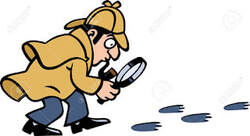 Amazon is a search driven selling platform. While Amazon may suggest things for people to buy, based on their previous purchases (Amazon is still trying to sell me Lego based on a single purchase made 5 years ago) most users have some idea what they want to buy and they go looking for it, using Amazon’s search bar. They may have a very specific idea of what they want, such as “romance involving pirates and buried treasure”, but some have less specific needs and input single or double search words such as “fantasy” or “cozy mystery”. They may even be looking for books by a favourite author, so they just enter their name in the search bar. Which means you have to adopt a strategy that allows the readers to find your books based on searches such as that. And when it comes to author name searches, just because they are looking for the latest Lee Childs book, it doesn't mean they won't buy your book at the same time if you can catch their eye. There are three parts of your book’s description that you can use to help readers to find it. The subtitle, the blurb and the 7 keywords that you put in the book’s metadata* (if you publish using KDP). Using the right words for the genre of book helps your book to show up when you run what Amazon calls an “automated category ad”.  That is the simplest form of ad to set up on Amazon, as they do most of the work for you. But it is also the least efficient because it relies on you and your readers thinking the same way and your readers selecting the keywords that you thought of when you set up your metadata (which probably didn't include author names) A more targeted strategy is to set up ads that use lots of keywords, so that you go beyond the 7 that KDP allows you (you may not even use KDP as your publishing platform). This is where tools such as Publisher Rocket come in handy, because that analyses Amazon’s sales data to see what search words were used to sell a book. So, if your book is similar, you can use the same keywords so that searches show your books to readers in the search results. But even if you don’t have Publisher Rocket, you can still generate lists of keywords because a lot of them are author names and their book titles. You can generate random search terms and see which ones produce results for books similar to yours. You can also search for books like yours and use the names of the authors and their titles as keywords in your ads. FYI, incognito browsing is best for this so that you aren’t shown books like the ones you usually read. You should be looking for about 150 -200 keywords for each ad you run.  Now to social media strategy. You can use keywords for that too – they call them hashtags – but the first barrier you have to cross is shifting people from their “social” mindset to “reader and buyer” mindset, which is no simple trick. We are so used to ignoring ads on social media nowadays that unless we see something really eye catching we just scroll past it. We posted a blog a couple of weeks back which was about “stopping the scroll” (see our archive for April 2024) and that is what we are talking about here. But different social media platforms attract different audiences, and those audiences are looking for different things, That means that the advertiser has to adopt different strategies on different platforms if they want to stop the scroll. If you want to advertise to younger readers you need to be on TikTok and that is very much a music and video based platform. If you can combine the two effectively then you have a chance that your ad will be seen,  But it is also a platform where people talk, so a talking video advert could work too. People like to see other real people on TikTok so if you are a person and you put yourself in front of the camera and start talking, you are probably going to be seen. Obviously, that isn’t going to suit everyone. Some people run away screaming when a camera is pointed at them. If that is you then fine, but it doesn’t mean you can’t use TikTok. You just have to use your creativity in a way that allows you to get your message across in a visually appealing way without you having to show your face on camera. Instagram and Pinterest go together in some ways, as they both rely heavily on images, but just putting an image of your book cover on them isn’t the best idea. The image has to be more than that. It has to stop people in their tracks and get them to say “Wow, I wonder what that is about?”. The image doesn’t even have to feature your book cover. It just has to appeal to people who like reading your genre of books.  Pinterest is a particularly good place to advertise because about 50% of users do go on it looking for ideas for things to buy, which is way more than any of the other social media platforms. It is also a good place to go if you are targeting women readers because they use it for buying more than men. X (Twitter as was) is a bit of a bear garden and I’m not sure it even counts as “social media” anymore as many of the people who use it are far from sociable. But it must sell stuff or businesses wouldn’t use it for advertising. We don’t use it for that, because we aren’t sure that it’s the right advertising channel for us. We do, however, use it as a social media platform and we promote our books on it, but we don’t pay for advertising. Finally ,we have Facebook. We use Facebook for advertising almost as much as we use Amazon Ads and it does work, once you have developed the right advertising strategy. 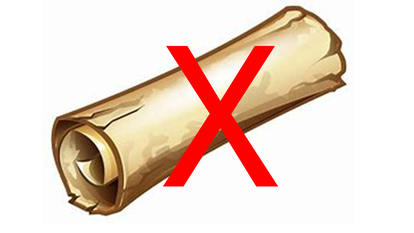 Research has shown that it is the image that stops the scroll. Then the user reads the headline (the words immediately under the image) and then they read the primary text (the main body of the ad). So, you have to “stop the scroll” with the image, hook the reader with the headline and then sell them the book with the primary text. If they like what they have read, they’ll click the link. They may not click the link just because they like the image, so the three things have to work together. That gives you 3 variables and you may have to try different combinations to find the one that is a winner. Without that Facebook will end up spending a lot of your money and you won’t get much in return. If you want to use your book’s blurb as the primary text, you may need to develop different versions of it to appeal to different readers.  The lack of research into what readers find appealing may be why some authors find it difficult to get Facebook Ads to work for them, because they try just one combination of image, headline and primary text and when it doesn’t sell them any books, they give up. We have proven this for ourselves, using 3 different images but with the same headline and primary text. One image always shows up as being more effective than the other two. We then reduce the spend on the less effective ads and increase it on the more effective one. Facebook even has technology (called Digital Creative Testing (DCT)) to help you find combinations that work. You can upload several different images, several different headlines and several different primary texts and Facebook will run ads using the various combinations. You then analyse the results and decide which ones are winners and which are costing you more than they make back. 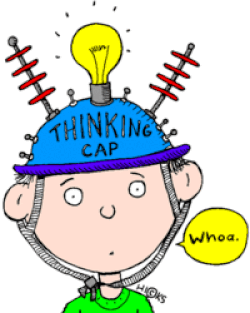 Finally, you have the book promotion sites (Bookbub, BooksGoSocial, WrittenWordMedia et al) which, for a price, will send out promos for your books to their social media followers and email lists. They have rules of their own about what you can and can’t do when using them and they vary too much for us to cover them here. But the same basic idea of developing a strategy that suits the platform applies to them, in just the same way as it applies to Amazon and to social media. So, our key message for this blog is to think about where you are going to advertise, think about why people are using that platform, then develop a strategy that will appeal to that sort of user. Don’t just assume that an ad is just an ad, because it isn’t. * Metadata in book publishing terms means the combination of book title, subtitle, genre, blurb and any keywords you are able to enter. They are critical when you are trying to get your book to show up in search results. If you have enjoyed this blog, or found it informative, then make sure you don’t miss future editions. Just click on the button below to sign up for our newsletter. We’ll even send you a free ebook for doing so. For this week's blog we are pleased to turn our page over to one of our authors, Chris Graham, for his take on what makes a good novel. Disclaimer: The views expressed in this blog post are those of the blog's author and are not necessarily those of Selfishgenie Publishing.  Your kind of book… What is it that makes a novel your kind of book? Is it the ‘main man’ (or woman), whether it’s a villain or one of the good guys, or is it the settings and the whole ambience of the book? Do you like the mystery aspect of the plot? Are the ‘whys’ and the ‘whos’ more important than the ‘hows’, or do you want every drop of spilled blood to splash off the page or dribble from your Kindle into your lap? (Editor's comment: Gross Chris, tone it down a bit!) Do you like to hear every crunch of bone as our bad guy brings down his cudgel, or as the hero breaks the villain’s jaw with a well-placed uppercut?  On the other hand… Maybe you’re not into ‘derring do’ or the crime fighting. Maybe it’s the interaction between the characters that floats your boat: something that I assume is the attraction of romance fiction, or even erotica, but which can be just as prevalent in crime writing. Do you like every nuance of the characters’ feelings to be clarified? Or perhaps you prefer to work it out for yourself, or even be surprised when two characters end up in bed, or even walking up the aisle? When they do get it together, should every glistening bead of sweat or running teardrop of happiness or remorse be turning the page to a soggy mess? Should every pant of passion be spelled out in breath by breath detail till the lovers can hold it no longer? On the other hand, their feelings may take a different turn, and they begin to disagree about everything, or even start taking swings or kicking the crap out of each other.  Variety is the spice of life… or death. As well as writing, I read too, both for my own pleasure and when proofreading other authors’ work, and it’s fascinating to see how different writers go about their craft. This is for my own interest as a reader as well as from a comparative perspective, to aid my own writing. Yes, I suppose it could lead to plagiarism, but we writers prefer to call it ‘influence’. Everyone from Shakespeare and before, through to Barbara Cartland and her legions of imitators, has done it. Whether they knew it or not. It’s interesting, being a crime writer myself, to note the different types of protagonists in crime fiction. There are the lucky sleuths, often living in tiny communities, who regularly get a nice juicy crime dropped right into their laps. These can be local police officers, like Tom (and John) Barnaby of Midsomer fame, or they can be amateurs like Agatha Christie’s aged spinster, Miss Jane Marple, and Chesterton’s meddlesome priest, Father Brown, but the one thing they share, is an unfeasibly high serious crime rate for such small communities. Then there are the professionals who aren’t limited to their own small localities, like Poirot or Sherlock Holmes, and those ‘big city’ coppers like Lynda la Plante’s Jane Tennison, John Creasey’s Gideon, Biba Pearce’s DCI Rob Miller, or even civilised Oxford’s Morse, from the pen of Colin Dexter, all of whom at least have a reasonable catchment area for their crimes to occur in. With the professionals, we must also include those specialists who assist the police, like the CSI teams, the forensic scientists, as in TV’s ‘Silent Witness’, the psychologists like Thea Hartley’s Resa James, or Fitz from TV’s ‘Cracker’.  Anti-heroes Somewhere between these ‘good guys’ and our criminals, come those in a grey area. Working on the side of the ‘good guys’, but often from the wrong side of the fence, and bending, or even completely smashing, the rules. Characters ranging from Leslie Charteris’s urbane Simon Templar, or my own call girl, Lena Fox, to far more violent heroes like James Mitchell’s Callan, Lee Child’s Jack Reacher, and Frank Westworth’s JJ Stoner (a particular favourite of mine). It seems that the men and women in the white hats can be even more varied than the criminals they hunt down, but they usually fall broadly into two types: the ones who the reader identifies with and actually likes, and the absolute evil bastard who’s too far gone for legislative punishment to be enough for. The ones who deserve whatever sticky and often painful end that the author can dream up.  Lena Lena Back again… and again… So, what’s been the common denominator between all these characters I’ve outlined? Yes, they’re all series characters. All of them appear in multiple stories (or are destined to.) More interestingly, they all have quite complex ‘back stories’ running throughout the books or TV dramas. From Fitz’s gambling and tenuous family relationships, or Barnaby’s cosy village idyll, to Resa James and her tangled family and romantic life, and my own Lena and her friends (who very often are more important to the investigation that Lena herself). It’s a little like having your own private soap opera running alongside the crime novel. A soap that continues on from the last story in the series that you read, with a cast of familiar characters that the readers can know and love… or even dislike… maybe even starting out likeable, then becoming that ‘evil bastard’ that we all know and love.  Fun Friends Fun Friends Incestuous relationships… People do say that we writers have a relationship with our characters… especially those of us who write the aforementioned ‘series’ books with regular characters who appear from book to book. The characters you write become like your mates… even the dodgy ones. We’ve all got dodgy mates, haven’t we? But with my ‘Lena’ novels, in some cases all I can say is “The chance would be a fine thing” ’cos there’s a couple of characters in them who’d be an awful lot of fun to have a relationship with. However, we live with these characters all the time, because we’re creating their lives and their futures, so yes, I guess we are in a relationship with them, but wouldn’t that be some kind of incest? I mean to say… these ladies are my own offspring I suppose, so it makes it a bit suspect really.  Killing off your creation… I can remember one point in time when this relationship thing was hammered home to me. I’d decided that one good way to develop the plot of the novel I was working on would be for one of the characters to be murdered. (Not a regular character… This is the first book this one had appeared in.) I’d worked out why she should be murdered, and how it would affect the way I would end the novel (which was why she had to die) so I went ahead and wrote her death scene, even though the plot hadn’t quite reached that point yet. I could then steer the plot towards that point, and then onwards towards the final ending I had in mind. That's how I work. If I have to keep ‘turning the pages’ to find out what's going to happen, then hopefully, so will my reader. It’s only when I’ve got a fair way into the story that I decide how it might end… and even then it can often change.  Guilt… So, I’d done the grisly deed, initially anyway. However, I hadn’t been bargaining for this ‘relationship’ situation. After I’d written the scene, I began to feel really guilty, because she was such a nice character; one of the good guys, who’d already had some real crap chucked at her in the story… and I’d now become the nasty bastard who’d just murdered her in cold blood (well, in a lift, really… but you know what I mean.) It felt like bumping off a daughter. I wasn’t sure whether to use the scene or not. Should I just file it for later use? I can always change names and other minor details to slot it into another book later. Maybe use it to kill off a nasty scheming little slapper or something  I’ve done similar things with a couple of bedroom scenes that were cut from the original ‘Transactions’ manuscript because it was thought by a publisher that the mighty Amazon (no, not the river) might not be happy about too much description when the character has been clearly defined as ‘underaged’. (Her age was necessary to the plot). Apparently anything goes for grown ups, but teens need to be handled with care. As it turned out, leaving some things hinted at, or wondered about by the reader, made the scenes work even better. The original scenes were saved, then later had names, and in one case the character’s physical stature, changed to slot them into a later book (‘Deadweight’ - “Not too bad at all for a big girl”…due to appear under Selfishgenie’s banner soon). They worked perfectly. So, did I have a pang of conscience? What did I do with my charming, ‘good guy’ character? Did I decide that I couldn’t subject this delightful young lady to a nasty messy ‘choking on her own blood’, ‘bladder letting go’ death in a lift? 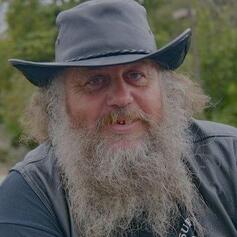 Chris Graham Chris Graham Did I hell. I used the piece, getting straight down to writing the scenes leading up to it, and following her death, her killer being hunted down by her boyfriend, fuelled by a dangerous and unstable high octane brew of agonising pain, intense hatred, and adrenalin. This writing lark can be so much fun sometimes. Over to you, blog readers… What kind of novels float your boat? What kinds of characters appeal to you? Which kinds of settings, locations, and situations? I’m sure that’s a question that all authors and budding authors out there would love to know the answer to. To find out more about Chris Graham and his books, click here. If you have enjoyed this blog, or found it informative, then make sure you don’t miss future editions. Just click on the button below to sign up for our newsletter. We’ll even send you a free ebook for doing so. 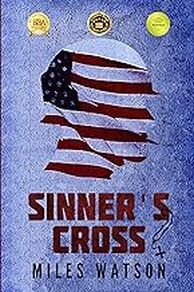 For fans of World War II fiction, military fiction, historical fiction or just good old fashioned action adventure, “Sinner’s Cross” by Miles Watson is a must read book. And, as the research for it is so good, it may appeal to amateur military historians too. I have to issue a “trigger warning” however. The scenes of combat and bloodshed depicted in the book are not for people with a weak stomach. The descriptions are quite graphic in parts. I’m sure the author would make no apology for that because, let’s face it, war is not pretty and not for the faint hearted. However, in terms of its storytelling, this book earns the five stars I have awarded. To be honest, I almost feel like breaking with tradition and awarding six stars. The story is set against the backdrop of the Battle of Hürtgen Forest, which took place between 19th September 1944 and 16th December 1944. It should be a battle that is far better remembered but was somewhat overshadowed by the Battle of the Bulge which started on the day the Battle of Hürtgen Forest officially ended. The Battle of Hürtgen Forest cost the lives of around 33,000 American soldiers, with another 55,000 wounded and it also took the lives of 20,000 German soldiers. There are also political implications to the battle which may be why it isn’t so well remembered. The battlefield was of very limited strategic value, certainly not enough to warrant the death toll, but it somehow became an obsession for the American generals to capture this obscure bit of forest, which lies to the east of the Belgian/German border and the German city of Aachen. Aachen was the first German city to fall to the Allies, which may have exaggerated the importance of the nearby forest. The story is told in three parts, with each part being seen through the eyes of a different protagonist. First we have Sergeant Edward T Halleck, a hard bitten former cowboy from Texas who has been in almost constant combat since the Allied landings in Morocco and Algeria in November 1942. His war weariness is such that he hardly bothers to memorise the names of the men sent to replace the casualties from his platoon, because he knows their chances of survival make it barely worth his while. The second point of view (POV) is from one of those replacements, “butter bar” 2nd Lieutenant Robert Breese. Breese believes he shouldn’t be in the Army and, if he must be, then his talents would be best used making Army recruitment films back in New York. He has no idea what he is doing in the Hürtgen Forest and even less idea of what he is supposed to do now that he is there. The final POV is from the German side of the battle. Major Martin “Zengy” Zengen is a veteran paratrooper who has fought in every engagement in which the fallschirmjäger have taken part since 1940. He has lost count of how many friends he has lost to the war but, until now, his dedication to duty has been unquestioning. His epiphany, when it comes, takes an unusual form (which I won’t reveal) but it is so deeply moving for him that it completely reshapes his thinking. Each part of the book stands alone, so there is no switching back and forth between POVs, but characters from one part do pop up in the others, so that some of the consequences of some of their actions can be observed. What makes this book so enthralling isn’t the characters, though they are well drawn, it is the story telling as a whole. I found myself living and breathing the combat almost as though I was there. The reader feels every explosion, hears every bullet cracking past their ear and smells the smoke and blood of battle. It is quite unnerving at times just how deeply it is possible to get drawn into this story – hence the trigger warning issued above. The historical detail is exemplary and Miles Watson is obviously a keen scholar of World War II history. He pays attention to the minutest detail, but at no point does he ever cross the line into geekiness. There is a sequel to Sinner’s Cross (the title comes from the scene of much of the action) called The Very Dead of Winter. I have to confess that I read that before Sinner’s Cross (see review in the blog archive) which is why I came back to read the first book. Knowing which characters survive to reappear in the later book, however, made this book no less enjoyable. I can only hope that Miles Watson finds time to write a third book for the series. I cannot recommend “Sinner’s Cross” by Miles Watson, highly enough. To find out more, click here. If you have enjoyed this blog, or found it informative, then make sure you don’t miss future editions. Just click on the button below to sign up for our newsletter. We’ll even send you a free ebook for doing so.  One of the common questions seen in writers’ groups on social media is “How much do authors earn?” The question comes in a variety of forms, some trying to disguise the fact that the person asking the question is only interested in making a quick buck and thinks that being an author may be the way. But some people genuinely see being an author as being the road to making a decent living. Of course, for some authors, it is a way of making a decent living. Indeed, some authors become very rich through their writing. But for Joe (or Josephine) Average, the average author, is it a realistic way to make a living? We would say it probably isn’t. I’m afraid we have the data to back that up as there has been a lot of research into this over the years. 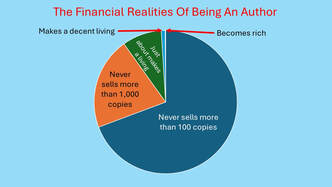 Let’s start with some basic facts. 70% of all the authors who publish or are published, never sell more than 100 copies of their books. Some of that is to do with marketing, of course. If no one knows about the book they can’t buy it. Some of it is because the books are about subjects that don’t have a wide audience appeal. They are either on very niche subjects or they are memoirs about lives that just aren’t that fascinating, but the author thought they were. Finally, they just aren’t very good books, certainly not as good as the author thought they were, and can’t garner enough good reviews to encourage people to buy them. Of the remaining 30% of books published, 70% of those won’t sell more than 1,000 copies. That’s about 21% of the total number of books published (so we’re now up to 91% of the published total). Again, the reasons are varied, and marketing once again takes centre stage, but the fact that the book has sold between 100 and 999 copies suggests it isn’t a bad book, per se. But that leaves just 9% of books published selling more than 1000 copies. However, you need to sell about 30,000 copies to make a living wage. That is to say, a wage good enough not to have to do any other work. Even then that will depend on other factors in your life such as the size of your mortgage (or amount of rent you pay), the size of your family and your lifestyle. One person’s living wage is another person’s poverty – or wealth. Less than 1% of authors make what we might regard as “decent” money and only 0.1% ever become rich from their writing. And even then, most of their wealth doesn’t come from their books, it comes from the TV and film rights for their books. So, if you haven’t written the first word of your novel, how do you know if you are going to be in the 99% or the 1%? You don’t. 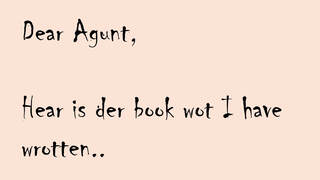 If you get as far as completing a good draft you start to get some indication of your likely success from the reaction to your work from agents, though it takes some time to gather enough data. One rejection doesn’t mean much. It just means that the agent may be too busy or doesn’t really like your genre, or just didn’t get your “message”. Ten rejections should start the author thinking a bit, but it still isn’t conclusive evidence. According to publishing legend, J K Rowling received at least 10 rejections for her first Harry Potter book. But once you get to around 20 rejections the message should be becoming clear. Even then, the message only applies to that book. Some authors query three or four books before they get one accepted by an agent. What made that book different from the first three? The author will probably say there was nothing different about it. But the agent thought it was different enough to take a chance on it, so there must have been something.  But even then the story isn’t finished, because there is a growing body of self-published authors that are making 6 digit and even 7 digit royalties. So, the agents obviously don’t know everything when it comes to what makes a best-seller. But what makes those 6 digit self-published authors different isn’t necessarily their writing. I have read some of their books. They are OK, but I wouldn’t call them remarkable. In fact, some could be described as mediocre – but they still sell. What is different is that their authors invest a lot of time, effort and (probably) money into marketing. They have become expert at it, which is how they are able to sell so many books. As a small publisher, we have seen this for ourselves. When we market a book, we sell copies. When we stop marketing it, sales dry up very quickly. Authors think that what they are paying us for is editing, cover design, proof reading, formatting etc. Sure, we do those things, but the authors could pay anyone to do those things for them. No, what we are really being paid for, and the way we make our money, is book marketing. Yes, we do the other stuff, but until the book sells we don’t make a penny and neither does the author. Marketing pays for everything. And, while trad publishers may tell you otherwise, it is in the marketing of books that they also make their money. Everything else they do costs them money. Editors, cover designers, proof readers and the rest of the publishing team, all have to be paid before the books have sold a single copy. So, if you want to make money out of being an author, you must first learn how to be a marketer. Once you know how to do that, then start writing your book. Doing it the other way around only leads to disappointment, because it takes longer to learn to be a successful marketer than it does to write a book.  And if you do that, you might just make a decent living out of writing. Even if you are certain your book is going to find an agent and be trad published, you can’t be certain that will happen. So if/when the horrible truth hits you, it is already too late. It’s fine to have a dream that one day your writing may make you rich but keep yourself grounded with the knowledge that it may not happen. And even if it does happen, it may take some time before it does. To quote Kipling “If you can dream and not make dreams your master;” If you have enjoyed this blog, or found it informative, then make sure you don’t miss future editions. Just click on the button below to sign up for our newsletter. We’ll even send you a free ebook for doing so.  All Indie authors know how important their book cover is when it comes to selling their book (if you didn’t, you do now). But images in general are vital when it comes to promoting books. It’s no good having a great cover if you can’t get people to go and look at the book’s product page. Many authors use social media to direct people to product pages, but over recent years the effectiveness of this approach has declined. And there is a very good reason for that. The key words I want you to remember from this blog are “Stop The Scroll”. Did you know that the average social media user scrolls the equivalent to the height of the Eiffel Tower on their social media every day? 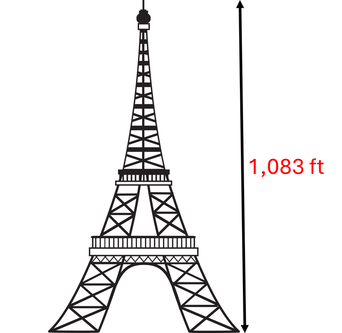 Just to put that in context, that’s the equivalent to 1,083 ft give or take the odd inch (330 metres to the tip of the radio mast). That is a lot of scrolling. Social media users are continually scrolling, scrolling and scrolling as they search for the next thing to catch their attention. Even when they stop scrolling they often don’t pay attention to a post for more than a few seconds. The average attention span for a post on social media is only 1.5 seconds according to research carried out by Linkedin. When it comes to selling books, social media is what is called a “secondary source”. That means people don’t go onto it specifically to find books, the way they would on Amazon or one of the other book selling websites. They go on social media for different reasons. Which means that the challenge for the Indie author is even greater. 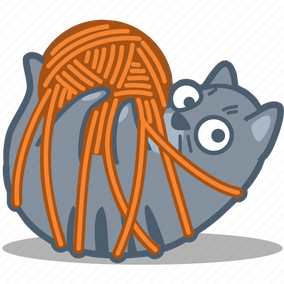 The challenge is to stop the social media user from scrolling past their post for long enough to read the content and take an interest in the book, even though they aren’t looking for books to buy.. And it is a considerable challenge. They are in competition with cute kittens, people falling into rivers hilariously and pouting celebrities with big bottoms, for goodness sake. Which means the imagery used in promotional posts has to be equally eye catching, if not more so. It literally has to make people say “Wow, I wonder what that’s all about?”. So they have to stop scrolling for long enough to find out. Did you know, you don’t actually have to put your book cover in your promotional imagery? In fact, it might even be counterproductive to do so. 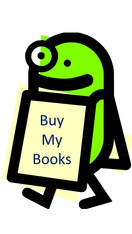 When people see a book cover in a post, they automatically think “Oh, just another author promoting their book” and they scroll past – even if they might actually enjoy reading the book. Because they’ve only looked at it for a fraction of a second they have no idea if it’s even in a genre they like to read. But if they see an intriguing image that doesn’t feature a book cover, they may stop scrolling for just long enough to start reading the text that goes with it. And once they start reading the text they might just find out about a book they might be interested in. For example:  If they see an image featuring a book cover with a dragon on it, they might think “Oh, just another fantasy author promoting their fantasy book” and scroll past because they’ve got a shelf full of fantasy books already. But if they see an image of a dragon without a book cover, they might say “Oh, a dragon. I like dragons. I wonder why someone has posted an image of a dragon?” Do you see how the psychology of that works? Instead of saying “Here’s my fantasy book, please buy it.” the author is saying “Look here, I’ve got something interesting to say about dragons.” 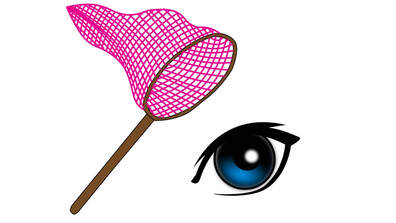 As a social media user, which approach would stop you from scrolling past? Now, I’m not saying it will turn zero sales into millions of sales by itself. But if it gets you a few more clicks to the sales page of the book, then the sales page may do the rest of the work for you. But if someone scrolls past your post because they think they don’t need another book, you get nothing. So, what sorts of images will stop the scroll? Two things mainly. One, they will be eye catching, making the viewer want to ask questions about them. Two, they will relate directly to the genre of the book. 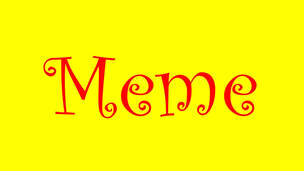 People are always looking for memes they can share, so putting some text with an image can also stop them from scrolling because they think the post may be a meme. Not the book title, but something related to the book. An extract from a review works well, especially if accompanied by a star rating*. Make sure you say “Reader Review” or “Amazon Review” etc. Other short text, eg “Jaw dropping adventure” also works. Making different versions of the image and posting them on different days will attract the attention of different potential readers, so don’t be scared to try out different ideas. If you use the site’s metrics you’ll soon learn what works for your genre from the way people react to the posts.  Try using variations of your images. Try using variations of your images. You can actually use elements from the book cover if they can stand by themselves, or you can create a scene that incorporates the cover image (minus the title, author name etc). Photoshop, Canva, Bookbrush et al have tools to help you create interesting images. Just because you normally turn them into a book cover doesn’t mean you can’t also use them as a picture by themselves.  This is one area where I have no qualms about suggesting that you use AI. It is the ideal tool to allow you to create genre specific images that result in professional quality pictures. I’ve played around with it and the image alongside this was created using AI. Would you scroll past that? . Well, to answer our own question, we posted two versions of it on a social media page. Version 1 included a book cover and version 2 didn’t. Both versions were accompanied by the same text, which was taken from the blurb for the book, plus a link to click on. Version 2 got almost double the number of link clicks compared to version 1. So, dear reader, what are you going to do to “Stop The Scroll” past your book promotions? * Please don’t make up review extracts or fake star ratings. Readers may check them out and if they do they may make adverse comments on the original post, which will undo all your good work. I know you would never do that, but I thought I’d better say it anyway. If you have enjoyed this blog, or found it informative, then make sure you don’t miss future editions. Just click on the button below to sign up for our newsletter. We’ll even send you a free ebook for doing so. We are turning this week's blog over to one of our authors, Robin Saint, posting on the subject of Robin Hood. Disclaimer: The views expressed in this blog are not necessarily those of Selfishgenie Publishing.  Actor Richard Greene as Robin Hood. Actor Richard Greene as Robin Hood. As a youngster I was brought up on stories of Robin Hood. There were the movies of course, with Douglas Fairbanks and Errol Flynn, that used to pop up on Sunday afternoon TV. Even Disney gave us a cartoon version. But the big influence was the ITV series starring Richard Greene that ran between 1955 and 1959 (though it seemed to run for much longer). There were other series that came later, some better, some worse, but the 1950s version was the one that shaped my memories. Once I started to read for entertainment, rather than just to learn to read, Robin Hood books were high on my reading list. There were many written for children, and I probably read them all. As a naïve child I loved the idea that someone would exercise justice on behalf of the “little people” and right the wrongs that the rich and powerful perpetrated. How the persecuted sub-postmasters of the UK could have done with a Robin Hood to fight their corner for the last 20 odd years. But then I grew up and realised that while we would love people like Robin Hood to have existed, they probably didn’t. At least not in the form the stories say they did.  The Kray Twins, scourge of London's East End The Kray Twins, scourge of London's East End Many criminals have been compared to Robin Hood in their actions. I can remember the notorious London gangsters the Kray Twins* being given a favourable comparison in some quarters because they “loved their mum” and also because no crime was allowed to be committed in their “manor” without their permission, which made it a “safe place to live”. There are two things wrong with that comparison. Firstly, just because someone loves their mother it doesn’t make them a good person. All criminals have mothers and on the basis of statistical probability alone, some of them will love their mothers. The second thing is that if the Krays stopped other criminals from operating in their neighbourhood, it was only so that they could keep it all to themselves. They operated protection rackets and other criminal enterprises that preyed on their neighbours and if anyone crossed them, they would soon find out how unsafe the East End of London could become. It was, perhaps, the arrest and prosecution of the Kray Twins in the late 1960s that made me start to re-think the story of Robin Hood. 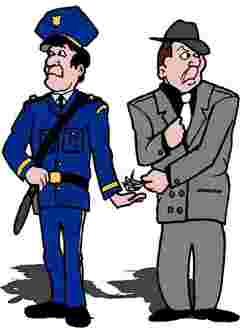 By now I knew that there had probably never been a real Robin Hood. There may have been a few real people (petty criminals in the main) who provided the basis for the stories, but the man himself never existed. One such story originated in Barnsdale Forest in Yorkshire, where a Robin Hood type figure used to stop travellers on the road and demand they pay a “tax” to continue their travels unmolested. Another way of describing that is as a protection racket, aka extortion. But what changed for me was the idea that just because a person loves their mum or looks after their neighbours, it doesn’t mean they can’t be a violent criminal as well. For example, if you need an alibi, then it helps to have a friendly neighbour who can provide it. If someone has knowledge of your actions or whereabouts, then it is probably a good idea to make sure that they are looked after. A small favour here, a bribe there and they’ll keep your secrets. And if they don’t, an underlying threat of violence will keep flapping lips closed. 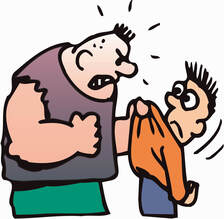 Robin Hood (if he existed) robbed from the rich, because that’s what criminals do, but he didn’t give to the poor – he bribed them. The poor peasants of Sherwood Forest would keep his whereabouts a secret so long as he was paying them more than the measly reward being offered by the Sheriff of Nottingham. And if the Sheriff of Nottingham increased the reward money, there was always the threat of violence to ensure the peasants’ continued silence. At the time these thoughts started to form I didn’t have much time to do anything with them. I had a full and busy life (I still have) and the idea of writing a book just didn’t seem feasible at the time. It was many years later when I started to write the odd paragraph that laid out my thoughts on the subject. The thoughts turned into characters and once I had those I could create the conflicts that would turn into a plot. So, what of the other characters? I won’t bother with the other outlaws. Criminals often work in gangs so we can assume that if Robin Hood is a bad guy, then his pals will be bad guys too. I gave some of them back stories, but ones that would lead them into a life of crime.  King John King John We have Prince John (as he was at that time). Well, he was the fourth son of a King and in those days the sons of kings pretty much took what they wanted. Historically, John didn’t have any land to draw an income from. His father had granted him rule over Ireland, but first he had to conquer it and that didn’t work out too well. When his big brother Richard became King he gave John the rights to the taxes from Leicestershire, Derbyshire and Nottinghamshire so that he would have some form of income. John gave orders to squeeze aa much in taxes from those counties as was possible, but that was the Sheriff’s job regardless of whether the taxes went to Richard or to John. John wasn’t a great Prince or King, but history tends to paint him as being worse than he really was for the period. Trust me when I say we have had worse kings (and queens) than John. The Sheriff of Nottingham was just doing his job, really. His job was to keep the peace and to collect the taxes on behalf of the King (or in this case, Prince John). Nobody likes tax collectors and if you were a criminal in Nottinghamshire you had other reasons not to like the Sheriff very much. In modern terms many people don’t like or trust the police, but they are the first ones to call 999 when their houses are burgled. So, I decided that the Sheriff of Nottingham was probably nothing out of the ordinary for the period, but he did have a boss that wanted more money, so he was probably a bit zealous when it came to collecting the taxes.  Maid Marion, a really foxy lady. Maid Marion, a really foxy lady. Maid Marion was probably the hardest character for me to create. At first I made her a “bad girl” who was attracted to Robin because of his nasty character (according to my version of him). It is a familiar trope and one that exists in real life (Bonnie and Clyde, Rose and Fred West, Myra Hindley and Liam Brady et al). But I realised I needed a nice character to contrast all the bad ones, so that became part of her role in the story. She’s a bit of a “goody two shoes” but that just helps to contrast with Robin’s darkness. Robin himself was easy to create. 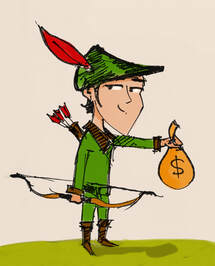 I followed some of the mythology and had him serving with King Richard’s crusaders, but rather than being a heroic figure coming home to reclaim his land and titles, I decided that he had used his time the Middle East to line his own pockets (the real purpose of the crusades was to grab land and wealth anyway. The re-conquering of Jerusalem for Christianity just provided an excuse.) and that had led to him crossing the wrong person. He fled King Richard’s army and returned to England. As he had been declared an outlaw for what he had done he had to live by his wits which, in those days, meant robbing and stealing. But even if Robin hadn’t been declared an outlaw, he would probably have followed a criminal path, because he wasn’t the type to earn an honest living. At least, my version of him wasn’t. That left me needing a hero, so I used a popular trope, which is the wrongly accused man. My hero, Erlich, is falsely accused of killing his own father and has to go on the run or face a noose. He finds a relatively safe haven with Robin Hood and his gang but hates the life they lead. All he really wants to do is clear his name and go back to his old life..  So, with a cast of characters all I needed was a plot to carry them and there were plenty of tropes to call on for that. Readers may recognise some of them. That is how I created Robin Hood the bad guy and turned him into my novel “Outlaw”. If you have any questions, feel free to post them in the comments section below and I’ll be happy to answer them. To find out more about “Outlaw” by Robin Saint, click this link. * Editor's note: Little known fact: The Kray Twins were the last prisoners to be held in the Tower of London. Ask in the comments section if you want to know why. If you have enjoyed this blog, or found it informative, then make sure you don’t miss future editions. Just click on the button below to sign up for our newsletter. We’ll even send you a free ebook for doing so.
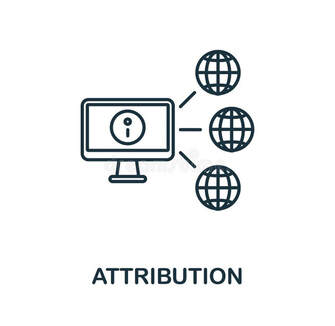 One of the problems that Indie authors have is trying to work out whether their social media marketing strategy is working for them. How does the author know if a sale has resulted from a random search on Amazon, what we call “organic traffic”, or if it has come from someone clicking on a link in a social media post or even from an advert posted somewhere like Google Ads?. This information is important for Indie authors. They spend a lot of time on social media, finding followers, building relationships, creating posts etc. They need to know if they are wasting their time, or if they need to invest more time on Platform A and less on Platform B.  The inbuilt metrics may tell them how many link clicks they are getting, but they won’t tell them how many of those clicks are being converted into sales and that conversion tells an important story. Some Indies go as far as paying for advertising on social media, or on sites such as Google Ads or on book promotions sites. How do they know if those adverts are actually resulting in sales? They may know how many clicks they are getting, but are those clicks earning them money – or just costing them money? This is vital information, because if clicks aren’t converting to sales, it means that there is something wrong with the sales page. It may be the cover image, it may be the blurb, it may be the free sample, or it may be the reviews – or lack of reviews. (BTW – this blog won’t help with diagnosing problems that are on the sales page. That is a whole different blog. Probably several blogs.) The KDP reports tell you how many sales or page reads you have had, but they don’t tell you where they came from. Connecting the different bits of information together to give you the whole picture isn't possible. So, wouldn’t it be wonderful if there was a way of tracking sales back to the place where the reader found out about your book? 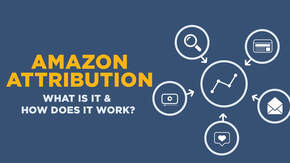 Well, there is. It’s called “Amazon attribution.” It’s FREE and it’s provided by Amazon itself, through Amazon Ads. Basically, what you do is create a unique link which allows Amazon to track the click back to its source. So, if the link is posted into Facebook and someone clicks on it there, then buys the book, the sale will be attributed to the Facebook post. Not only will this help you to identify where your sales originated, it will also tell you where you are getting your best results.  Did your best sales come from a Google Ad? Or did they come from a Facebook post? If it’s from a Facebook post then you might be better off not advertising on Google, but advertising on Facebook instead. Or on X, or Instagram or wherever you are getting your best results. This may also save you money, because you can now compare different platforms directly from which ones are selling your books. If you advertise on Amazon you will know if you get sales because the Amazon Ads data will show you. But what about Google Ads? From their metrics you will know if you got clicks, but you won’t know if those clicks turned into sales. With “Amazon attribution” that doubt is removed. Now, if you use a lot of sites for your marketing you will have to create a lot of attribution links. There is no point in using the same link on several sites because that doesn’t tell you which site is working best for you. You will need one link for Facebook, one for X, one for Instagram, one for Google etc. You can even use attribution links on your own website if you have one, to track sales that originate there, or to email shots and newsletters.  If you are running ads targeted at one particular country, say the USA, then you will need to make your link unique to Amazon.com sales. If you are targeting the UK as well, you will need a link for Amazon.co.uk. Etc. If you are selling on both, but you don’t know where your best sales are coming from, you may want to track sales in the two countries individually. So, you may have one link for Facebook post trying to get sales in the USA and a different link for Facebook posts aimed at the UK, even though you are using identical images and text to try to reach both countries. This could mean you creating a dozen or more links – but the information each link gives you will save you a lot of time and possibly a lot of money in the future as you will be able to make better decisions about your marketing strategy. Just to set your mind at rest, if you already have an Amazon Ads account then creating a link takes about a minute. If you haven’t got an account, it will take a bit longer because you have to set up the account first.  So, how do you get an “Amazon Attribution” link? The following instructions are aimed at use with a PC or laptop. I don’t suggest doing this on a phone or tablet because the screens will look different. I have created a short video (posted after the written instructions) which takes you through the process.. First of all, you need an Amazon Ads account. If you haven’t got one already, then you can create one direct from your KDP account. On your Bookshelf look to the right where it says “action”, click on the three dots. Find “promote and advertise” and click on it. Find “Run an ad campaign” and then locate the button marked “choose” and click on it. You will get a drop down list of all the Amazon marketplaces where you can advertise. If you are running campaigns aimed at different marketplaces and want to track each marketplace individually (recommended), you will need an ad account for each marketplace, though Amazon are planning to merge marketplaces for advertising in the near future, so by the time you read this that information may be out of date. I suggest you start with the country where you are based, or where you sell most of your books. For us that’s Amazon.co.uk but for you it may be somewhere different. Once you have selected your marketplace, you will get a new button displayed which says “Create an ad”. Click on that. You will then be taken through the usual pages needed to create an account if you don’t already have one, before you finally get to the “Ads Dashboard”. There is no need to create an actual Amazon Ad. They cost money. If you want to run Amazon ads that, again, is a whole different blog (which we have already published - look in our archive under “advertising”). On the left of your screen, you will see a vertical column of symbols which allow you to do various things. The only one you are interested in is the one that looks like a tiny bar chart. Click on that. You will get a new menu and you need to click on “Amazon Attribution.” This will open up a page which is headed “Measure Your non-Amazon Marketing Activities.” Below that is a button marked “Create Campaign”. You guessed it, click on that. This gives you two graphics, one of which says “Create manually” and the other doesn’t. Select the “Create manually” graphic by clicking on it and some boxes will appear below.. The first box asks you to name your campaign. Choose this name with care, because once you have created half a dozen of these campaigns you need to be able to tell which is which, eg which is Facebook and which is Google Ads, or whatever. Below that you will get a list of your books displayed. Scroll through the list and click on “add” to add that book to the attribution results. If you are marketing a stand-alone book, you need only select that book. If you are marketing a series, however, a customer may buy book 1 only, but they may buy other books in the series at the same time (whoop-whoop!). Or they may see the post for book 1, which reminds them that they read it and enjoyed it, and they may use that link to then go to your Amazon page and select Book 2 etc. So, for a series you probably want to select all the books in that series (and the box set if there is one). But, as a minimum, always track Book 1 because that is the series starter. If you have ebook, paperback and hardback formats you can select them all, or you may prefer to create an individual link for each format. That is your choice. We include all formats in the same campaign. Next you create your ad group. This basically provides Amazon Ads with all the information it needs to identify the source of the link when it is used, eg so it knows that it is coming from Facebook and not from Google. So, give the ad a unique name so that you can distinguish it later, when you come to analyse the results. In the “publisher” box select the platform you are using (Facebook, X, Google etc) from the drop down list provided. It is an extensive list and covers most social media and advertising platforms and some etail sites that allow links to be redirected to Amazon. You can also type in new publishers (sites) if the one you are using isn’t listed, eg your own website. If the platform you have chosen is social media, there is no deed to complete the next box. If it is something else, then there are other selections you may need to make. The “Click through URL” box is where you paste the link to the Amazon sales page for your book, in the version you wish to track. The quickest way to get to that is to go back to your KDP Bookshelf and click on “”View on Amazon” (make sure you select the version you wish to track) and then copy and paste the URL when you get to the Amazon page. Note: “View on Amazon” allows you to select any marketplace (territory) where the book is sold. So, make sure you select the marketplace you want to track. All you have to do now is look up to the top right hand corner of the page where you will see a button marked “create” and click on it. It takes a few moments for Amazon to create all the magic that is needed, but eventually you will be given a summary of your entry, along with an attribution URL. That URL is very long, but it is the one you then copy and paste into whatever activity you want to monitor. For example, if you want to monitor a Facebook post, you paste it into the Facebook post instead of the link you would normally use. Here's the video demonstration we promised. Using Facebook as an example, if anyone clicks on the link to go to your Amazon page the click will be recorded by Amazon and if they then buy your book the sale or download KENP (KindleUnlimited pages) this will also be recorded. From the name you gave the attribution link, you then know which post got you your sale. You view your results using the same “Amazon Attribution” selection in Amazon Ads, by clicking on the “Ad Groups” option instead of “Campaigns”. You can also track different channels (Facebook, Google etc) by clicking on the “Channels/Publishers” option, and you can access your links on the “Attribution tags” option if you want to copy them again for use in a new post.  When it comes to reviewing the results, Amazon are providing you with a free service, so they don’t rush to collate them. It can take several days for some results to appear. You will start to see your link clicks and KENP (Kindle page reads) the day after you post the link. However, in most cases the sales results may not be visible until around Day 7 or even later, An enhancement of the use of attribution links is if you want to try out different posts on the same platform. For example, if you want to see which images work best for your posts, which text attracts more clicks etc, you can create a unique attribution link for each version and then view your results to decide which is getting you the best results. That means you are working less in the dark and taking a lot of the “error” out of trial and error. So, if you are getting sales on Amazon but have no idea where they are coming from, you now know how to track them using “Amazon Attribution”. If you have enjoyed this blog, or found it informative, then make sure you don’t miss future editions. Just click on the button below to sign up for our newsletter. We’ll even send you a free ebook for doing so.  I read a post in a writer’s group on Facebook recently that bemoaned the fact that so much of the advice that was posted there was contradictory. It was ironic that this post was being made on social media, because all human life is there in its multitudinous forms. Advice spans the gamut from barking mad to the blatantly obvious (or is it that obvious?). Some of the “advice” being offered may in fact be mischievous in its nature, deliberately trying to mislead in order to provide some form of amusement for the person posting it. But the bottom line is that most of the advice offered on social media is actually opinion and is therefore subjective in its nature. While people try to turn it into a truism, it often doesn’t work for everyone.  The first point I must make is that what works for one author doesn’t necessarily work for another. We, for example, have had considerable success selling books using Amazon Ads. However, we know of many authors and small publishers who have been far less successful. There will be underlying reasons for that. A good book is a good book and advertising should be able to sell it. But there may be reasons why buyers aren’t buying the book that have nothing to do with its quality. But the simple fact is that where we find success with advertising, some authors don’t, so any advice we offer relating to our use of advertising is going to be coloured by our experiences, as is theirs.  Similar lessons apply to the writing advice offered to authors on the same group. It is quite common for authors to post extracts of their WIP and ask for comments. Some authors respond like cheerleaders, whooping with encouragement for the work. That’s fine. We all need encouragement from time to time. But it’s only fine up to a point. Other authors are more critical. Very often their comments get attacked by the cheerleaders for failing to be encouraging. But if someone is making obvious blunders in their writing, isn’t it better for them to be told so that they can correct the mistakes before it’s too late? We here at Selfishgenie Publishing are great believers in supporting writers, especially Indies. But gaining quality feedback is an essential part of the growth of a writer. 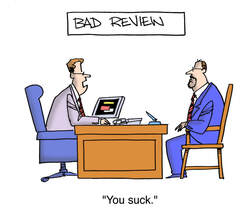 “Life long learning” and professional development are well established processes in many companies, because most employers understand that it is better to develop the skills of existing employees than it is to sack them and recruit someone new. But many authors don’t have anyone to help them to develop, except for other authors and the channel by which many authors are provided with that development help is social media. If we just act as cheerleaders, then it may boost the spirits of the author who asked for the critique, but it won’t do a thing for their development as a writer. OK, perhaps we have to be careful how we word things. “You suck” may be an accurate reflection of the quality of the writing but it doesn’t help the author any more than the cheerleading helps them. But to get back to my original point that most opinions or advice are subjective. So how does the author know which advice to listen to and which to ignore?  You can’t. If you could, you probably wouldn’t need to seek the advice anyway, because what is being offered is so blindingly obvious. But in writing we always have an escape route. Nothing that is done can’t be undone. We are not building the Titanic, so the mistakes involved in design and construction won’t result in the ship sinking. If we make a mistake, we can go back and rectify it. Even if we get as far as publishing a book, we can always “unpublish” if we only get negative reviews. It should always be remembered that we learn more from our mistakes than we do from our successes. Even if the only thing we learn is not to ask for advice about writing on social media!  But I do think that social media is a valuable resource for writers who want support and advice. So, what if the advice is contradictory? What can we do about it? We can exercise judgement. For a start, what is the majority view? I’m not going to suggest that majorities are always right (just look at election results), but it is more likely that a majority view will reflect what people have found to be successful rather than unsuccessful. Secondly, you can put the bits of contradictory advice side by side and weigh them in the balance. Intuitively, which sounds as though it might be right? We can go back to the person who offered the advice and ask them to give us a real life example of the advice working. What they provide (if anything) should tip the scales one way or the other. 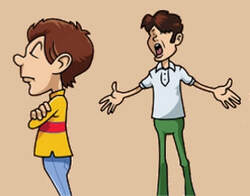 Thirdly, what are the consequences of making the wrong choice? Will you just be wasting a bit of time to put things back as they were? Or will it involve a loss of money because a bad decision was made? I would worry far more about decisions involving money than I would about decisions that only involved time – and I regard my time as being precious. Finally, you can actually ignore all the advice that has been offered and go with your gut instincts. Let’s face it, we make far more decisions based on that during our lives than we ever do after taking advice and look how well that turns out. When it comes to writing there are actually very few rules. When it comes to marketing the finished book there are things that work and things that don’t, and you can learn which work the best. There is definitely no substitute for learning when it comes to marketing, so don’t seek marketing advice on social media, seek it from a recognised training provider.  A lot of marketing advice is genre specific. If you write for YA audiences, you need to be thinking in terms of where young people are most likely to see your marketing messages. If your books are aimed at older audiences, you need to think about where they are going to see your marketing messages. The two places are likely to be very different. So, when you see advice that says “Doing this (whatever “this” is) really helped my book sales” you have to consider why it was successful for them and make an objective judgement about whether it will also be successful for you.  And if you want to learn how to market properly there are lots of blogs and tutorials available on-line on a wide range of subjects, but you have to do a bit of research to find them and then spend time reading/watching them. Social media may provide you with a short cut, but it is never an adequate substitute for proper research. But research takes time. But so does correcting mistakes. When I worked in business I was always amazed by how many people never had time to do the job right first time, but they always had the time to do it again when it went wrong. You can do things once correctly or you can waste time by having to re-do them. Which do you think following advice on social media is most likely to result in? If you have enjoyed this blog, or found it informative, then make sure you don’t miss future editions. Just click on the button below to sign up for our newsletter. We’ll even send you a free ebook for doing so. Disclaimer: No financial incentives were sought or offered for this book review. The reviewer purchased their copy of the book. The opinions expressed in this review are those of the reviewer and not necessarily those of Selfishgenie Publishing. 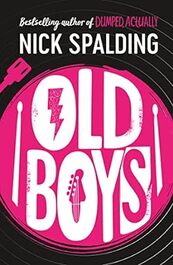 It occurred to me over the Christmas period that I had rather neglected my reading of Nick Spalding’s books. Nick Spalding is the sort of author you read when you just want to relax and forget about the cares of the world. Instead, you become immersed in someone else’s problems for a while. These aren’t the great problems of the world. There are no epic quests, no fights against dragons, whether real or metaphorical. There may be some fights against metaphorical demons, but they threaten the individual, not the world as a whole. In other words, you don’t need to keep looking out of the window to assess how close the world’s problems are getting. The problems Spalding’s characters face are the sorts of things we may all face in our lives at some point. Sometimes they are 21st century issues, created by our modern world and modern lifestyles, but often they are timeless. So it is with “Old Boys” which is the book I review here. As with all Nick Spalding books, it is written in a light-hearted style. Because this book deals with quite deep emotions, there are darker moments, but generally speaking it is what you might call a gentle comedy. It isn’t meant to keep you either laughing out loud or wide awake at night for fear of what might lurk beneath the bed. But it may make you stop and think a little bit about your own life and the choices you have made. And there is nothing wrong with that. The story is a familiar one. Will Fairweather is feeling depressed after the loss of his mother. It may have been 4 years earlier, but it is still hurting him deeply and affecting the way he lives his life. Frustrated by this his younger wife, Audrey, asks that they separate for a while to give Will a chance to sort himself out. It felt a little heartless to me, which is why I have only given this book 4 stars. I’m not sure that extreme action like that would be the first thing a loving spouse would suggest when their marriage is in trouble, but I guess it was necessary for the rest of the plot to work. There is another reason for only giving the book 4 stars and it is that at several points I felt like giving Will a good slap, because his wallowing in his grief is self-indulgent in the extreme. Perhaps that was why Audrey asked him to move out, as a way of giving him a metaphorical slap. Anyway, needing somewhere to go, Will ends up moving in with his estranged father, who has had no contact with Will for more than 3 decades. Will’s father, Red Fairweather, is the drummer with a prog rock band by the name of Holy Moly who were big in the 70s and 80s, though they are pretty much retired at the time of this story. Those readers who remember the likes of Keith Moon and John Bonham will be familiar with the stereotype drummer that Nick Spalding creates for Red. Spalding even points out the similarities. Several well known rock bands of that era and later are given name checks in the book, though they play only a peripheral part in the actual plot. I suspect that Nick Spalding may be a fan. I think it is safe to say that Red Fairweather doesn’t so much need a family as a combined nanny and psychiatric nurse. He takes it upon himself to try to help Will mend his marriage by “bringing him out of himself” through a series of bizarre adventures. As Red is now in his 70s the scale and danger of these activities is limited, but they are still enough to scare the highly risk averse Will before he has even tried them out. The book progresses along this amiable path, but things take a much more emotional turn in the second half. Here the home truths start to emerge, the family history, the cause of Red’s break up with Will’s mother and a whole lot more. Keep a box of tissues handy because you will need them. There is an underlying message in the book if you care to listen to it. I won’t reveal what it said to me, but it is a strong one and one which, perhaps, we should all remind ourselves of from time to time. If you have planned your summer holidays for this year this is exactly the sort of book you might like to take along to read by the swimming pool. It may not be high drama, but it will leave you with things to think about. You can find out more about “Old Boys” by Nick Spalding by clicking this link or the book’s cover image. If you have enjoyed this blog, or found it informative, then make sure you don’t miss future editions. Just click on the button below to sign up for our newsletter. We’ll even send you a free ebook for doing so. |
AuthorThis blog is compiled and curated by the Selfishgenie publishing team. Archives
March 2025
|


 RSS Feed
RSS Feed